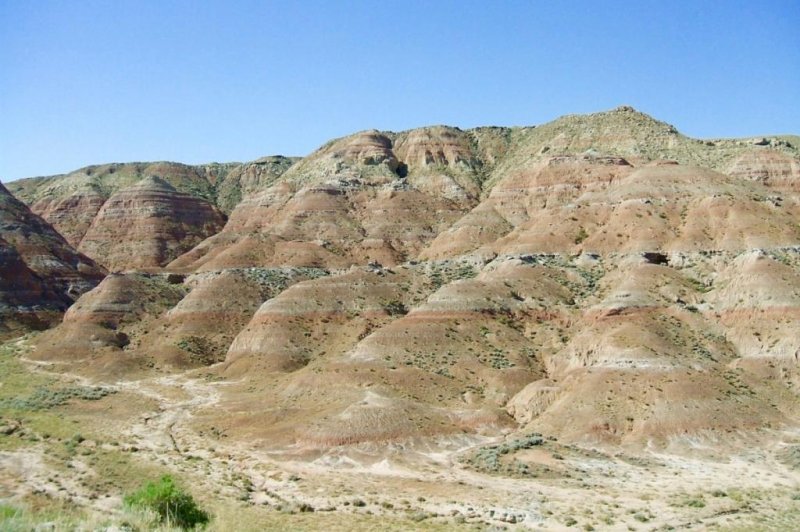Researchers found evidence of mammalian dwarfism in fossils collected from Wyoming's fossil-rich Bighorn Basin, which they think was caused by hyperthermal periods of Earth's history. Photo by University of New Hampshire
March 17 (UPI) -- Global warming can trigger global shrinkage among mammal species, research shows.
Scientists have previously linked major warming events with mammalian dwarfism. New evidence suggests shorter periods of warming, or hyperthermals, can induce similar shrinkage patterns.
"We know that during the largest of these hyperthermals, known as the Paleocene-Eocene Thermal Maximum, or PETM, temperatures rose an estimated nine to 14 degrees Fahrenheit and some mammals shrank by 30 percent over time, so we wanted to see if this pattern repeated during other warming events," Abigail D'Ambrosia, a doctoral student at the University of New Hampshire, explained in a news release. "The hope is that it would help us learn more about the possible effects of today's global warming."
D'Ambrosia and her colleagues collected fossils from strata related to the Eocene Thermal Maximum 2, a brief period of warming that occurred roughly 53 million years ago. During their excavations in the Bighorn Basin region of Wyoming, researchers targeted the jaw bones and teeth of Arenahippus, a small horse species, and Diacodexis, a small, deer-like herbivore, the oldest even-toed ungulate species.
Using molar teeth to gauge body size, researchers calculated the diminished body sizes of Arenahippus and Diacodexis. During the ETM2 -- which was shorter and less extreme than PETM -- the two species shrunk by roughly 14 and 15 percent, respectively.
Researchers published their results in the journal Science Advances.
"We found evidence of mammalian dwarfism during this second hyperthermal, however it was less extreme than during the PETM," said D'Ambrosia.
D'Ambrosia and her colleagues believe reduced body sizes helped mammals lessen body heat, but they say it's possible rising CO2 levels diminished nutrients in plants, curbing mammalian growth potential.
The researchers believe their findings will help biologists and ecologists track the effects of modern warming trends on mammalian body size.















